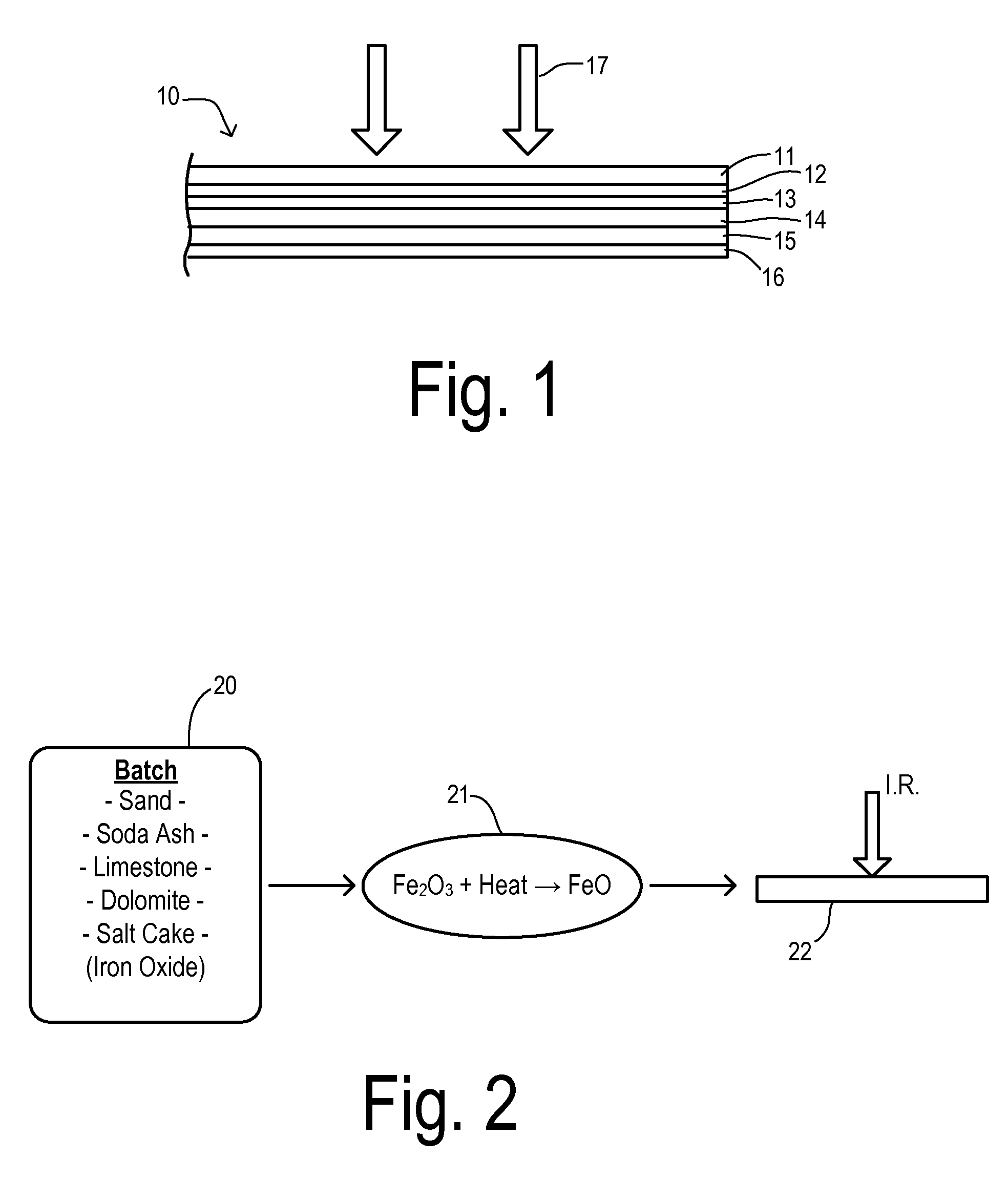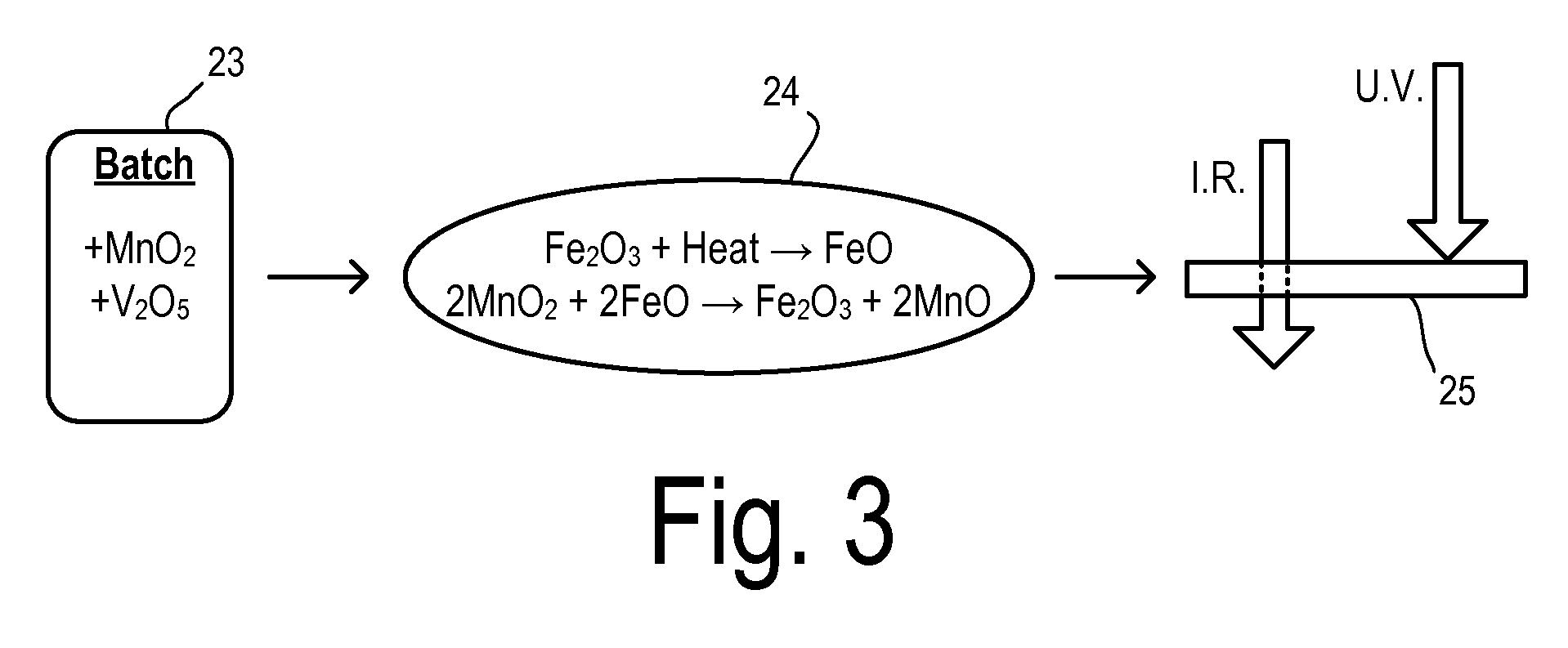High Visible/Infrared Transmittance Glass Composition
a technology of visible/infrared transmittance and composition, which is applied in the field of high transmittance float glass, can solve the problems of high transmittance clear glass, the inability to remove iron oxide impurities, and the increase in the cost of batch materials, so as to reduce the amount of reduced iron left in the glass, the effect of high visible/infrared transmittance and low ultraviolet transmittan
- Summary
- Abstract
- Description
- Claims
- Application Information
AI Technical Summary
Benefits of technology
Problems solved by technology
Method used
Image
Examples
Embodiment Construction
[0013]Referring now to FIG. 1, a typical solar cell construction 10 includes a glass cover layer 11 on top of an anti-reflective coating 12. A contact grid layer 13 overlies an N-type semiconductor layer 14 which has a junction with a P-type semiconductor layer 15. A contact layer 16 is provided on the bottom side of semi-conductor layer 15. Incident light 17 illuminates solar cell 10 to pass through glass cover layer 11 and anti-reflective coating 12 to generate a voltage across the semi-conductor layers. To maximize the voltage generated, glass cover layer 11 should have minimal blocking of infrared and visible radiation. To avoid deleterious effects on anti-reflective coating 12, it is desirable for glass cover layer 11 to block ultraviolet radiation.
[0014]As already mentioned, commonly available, inexpensive batch materials for making the glass cover layer contain iron oxide impurities. The effect of iron oxide on the transmittance of glass is summarized in Table 2 below.
TABLE 2...
PUM
| Property | Measurement | Unit |
|---|---|---|
| composition | aaaaa | aaaaa |
| infrared transmittance | aaaaa | aaaaa |
| ultraviolet transmittance | aaaaa | aaaaa |
Abstract
Description
Claims
Application Information
 Login to View More
Login to View More - R&D
- Intellectual Property
- Life Sciences
- Materials
- Tech Scout
- Unparalleled Data Quality
- Higher Quality Content
- 60% Fewer Hallucinations
Browse by: Latest US Patents, China's latest patents, Technical Efficacy Thesaurus, Application Domain, Technology Topic, Popular Technical Reports.
© 2025 PatSnap. All rights reserved.Legal|Privacy policy|Modern Slavery Act Transparency Statement|Sitemap|About US| Contact US: help@patsnap.com


